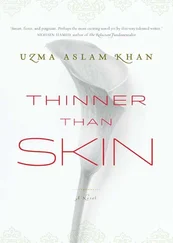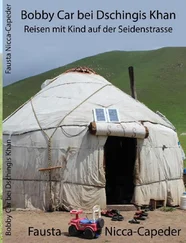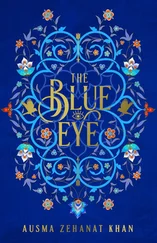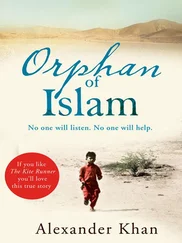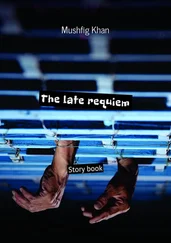On the tables, thousands of caterpillars were in various stages of spinning. Each had transformed from the drunken, lifeless chunk on perforated paper to an agile ballerina leaning forward on its tail. Everywhere she looked, each nosed the air like a wand and out passed silk. It was more like a scene from a fable, in Sassi’s lakhy bagh perhaps, than something that truly happened. That it happened here, in her mother’s farm, in the middle of the scorched Indus plain, amid the chaos of Sindh, made all her ethical quandaries regarding the breeding of another life form to suit human interests vanish. Standing in a room with eight thousand tiny creatures, witnessing them perform a dance that few humans even knew occurred; this was life. They sashayed to the left and swiveled to the right. They bobbed and undulated, dotting the air in figure-eights. They worked ceaselessly for three days and nights, with material entirely of their own, and with nothing to orchestrate them besides their own internal clock. Each, a perfectly self-contained unit of life. When Dia watched one spin, she came closer to understanding the will of God than at any other time.
By courtesy of another stolen page from a library book, she’d discovered that the ancient Egyptians had believed the dead could see butterflies and moths. Her thoughts always returned to her father when she stood here. He was here too. And he could see inside the cocoons. He witnessed each pupa grow, knew when its head began to turn and point toward the little opening at one end. He saw the creature kick and curl, preparing for the fourth and final stage of its life.
After fifteen minutes, she slid outside. Sumbul and the baby still waited.
Once the cocoons were spun, most were taken to the factory. There the moths were destroyed, or they consumed the silk thread as they ate their way out. To extract the thread, the cocoon was boiled in water, just as the Empress Hsi-Ling-Shih had inadvertently done four thousand years ago.
It was in the last part of the shed that those pupae selected for breeding were stored. Dia found this aspect of the breeding process unsettling. The cocoons moved. They were never found in the same corner where they’d been left. Nor had she ever actually seen the movement. It made her shudder to think the sleeping pupae could not only produce enough force to shift, but seemed to know when they were alone. Even more disturbing was the red liquid that oozed out from the shells. She knew what it was: waste stored in the pupa’s abdomen. But in texture and color it resembled menstrual fluid. As the pupae bled, the stench was overpowering.
Dia walked with Sumbul toward a woman with the last of the moths from the previous batch. The moths were bred to be flightless. They were stark white and wore a fierce expression, enhanced by feathery feelers that arched like indignant eyebrows.
The helper reported that this particular moth had produced about three hundred eggs, which had hatched into the youngest caterpillars in the front room. She was being taken outside, to die. Sumbul stroked her feelers. The moth twitched and glowered with protruding chocolate-brown eyes.
‘What a life,’ Sumbul mused. ‘Larvae for four weeks, pupae for two, moths for another two. It’s over so fast.’
‘Yet the silk they weave lasts for centuries,’ answered Dia.
‘While other creatures leave nothing at all behind.’ Planting a light kiss on her baby’s head, Sumbul added, ‘Except children.’
A strike was announced by the MQM the following day. Since the political party’s leader had exiled himself to London, he had urged his followers to accelerate their campaign of civil unrest and this was the eighth or ninth strike that year. Some of the shops around Dia’s house remained open but in the northern reaches of the city, a curfew-like situation set in: the shutters stayed down; streets were deserted; buses were burned. It was disastrous for both the farm and the mill: the workers would not be able to leave their homes. But as always, Riffat left the house immaculately dressed, determined to put in her hours.
Dia had already missed more than a month’s worth of classes this year because of the strikes. Since no one ever answered the phone, there was no anticipating the college’s closure. She lacked her mother’s stolid defiance. Racked with uncertainty, she performed every ritual — from washing and dressing to a hurried breakfast — as if it weren’t really happening. In the car, she sat in limbo, haunted by what the city said: God decides.
Today the college gates were open.
Nini awaited her inside. Even in their bland uniform, a poorly-fitting kurta the color of cat vomit, Nini moved with the grace and stature of a swan. Her oval face was smooth and chiseled, her lashes thick enough to rustle. It was a miracle really, thought Dia, that Nini had withstood pressure to marry this long. Proposals for her had been flowing in torrents since the day she turned fifteen. But then they’d stopped abruptly when news of her father’s declining business broke out. Dia wondered how much Nini’s eagerness to marry now stemmed from a fear that it was her last chance.
They kissed once on the cheek and Dia swung an arm into hers. ‘We have Pak Studies first period. Let’s skip it.’
‘Fine,’ said Nini. ‘You’ve got crumbs in your mustache.’ She brushed them off.
They crossed the hockey field. On one side loomed the classroom building, also the color of cat vomit. Every morning, students assembled there while the college principal tried to talk to all five hundred of them without a microphone. Most of the women either skipped the assembly or stood around discussing last night’s TV drama, the various joras made that week, shaadis attended, and who was seen with whom. The principal, a handsome woman in her fifties, was best loved for her saris. When Dia and Nini joined the women, those in the front row had passed their verdict. It was trickling down to the middle rows and eventually to the back, where they stood. Today’s sari was a blazing orange French chiffon with yellow swirls. Very bold. Very bubbly.
The assembly over, the two friends ambled to the far side of the field, passing the stone benches that studded its length. These were claimed immediately after assembly by those who’d passed the verdict on the day’s sari. They wouldn’t get up again till 2.00 p.m., when the college closed. The benches glittered with nail polish, lipstick, hair curlers, thread, wax, combs and clips. The college offered courses in beauty care without even having to hire staff.
Around the corner from the cafeteria was a walkway leading to a Catholic school that Dia and Nini had attended. Students from the two institutes were not meant to intermingle, but the policy was laxly implemented. As children, they’d sneaked over to the college and spied on the women that to them were all beautiful and wise, ruling over themselves like queens, while the schoolgirls were mere nun-toys. They’d grow up to be stolid commandos, just like the women! But now, it was the reverse. College women visited the school with longing, envying the girls that believed in them.
Hibiscus and jasmine bushes bordered the path. Behind these towered trees planted when the grounds were first laid out, in the early 1800s. The pebbled tracks between the trees offered Nini and Dia more space to wander in than all the city itself. Here they were unhampered by the eyes and hands of men, or the women of the white benches. The grove was clean and quiet, and there wasn’t an armed guard in sight. This was not to say there weren’t any — both the college and the school had sentinels at their respective and enormous front gates. But here it was easy to forget they were there.
Читать дальше
Конец ознакомительного отрывка
Купить книгу

